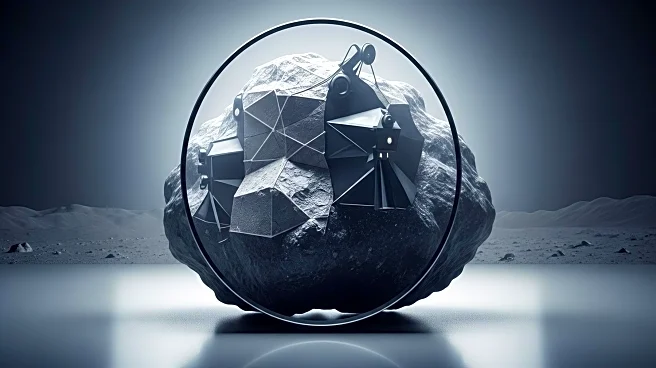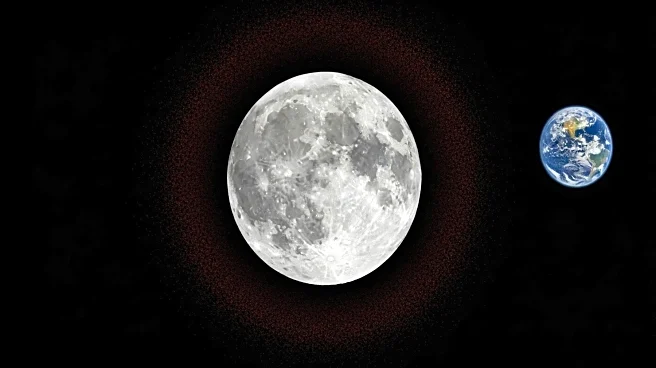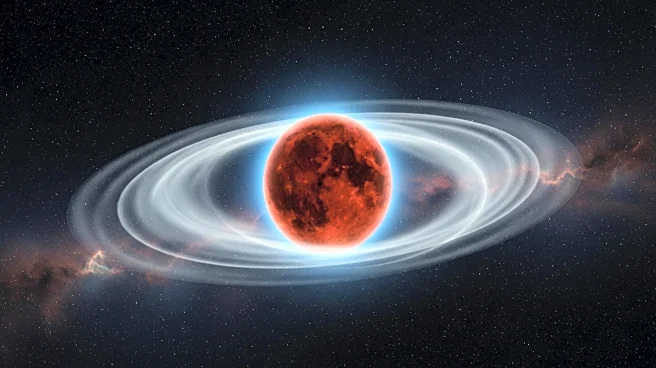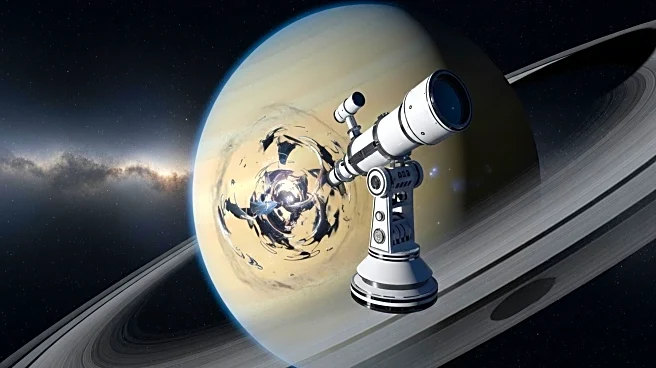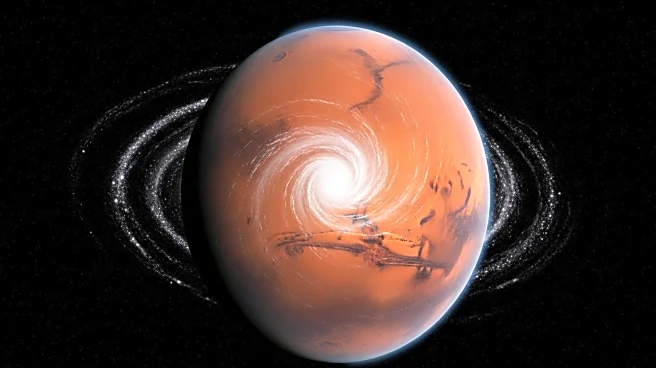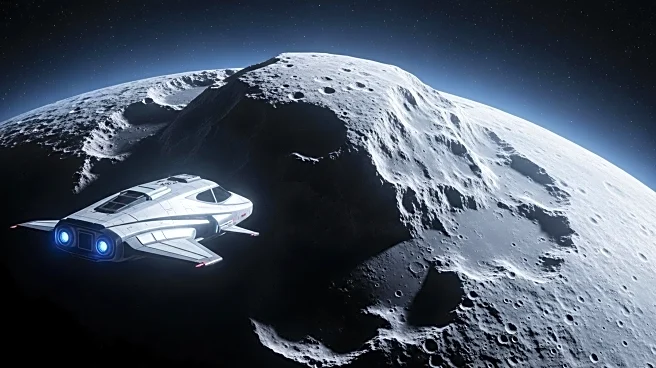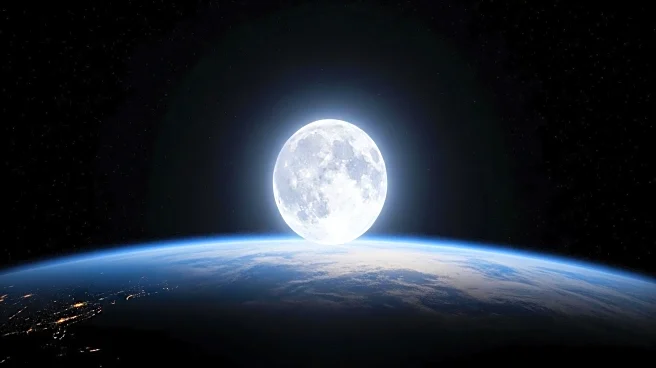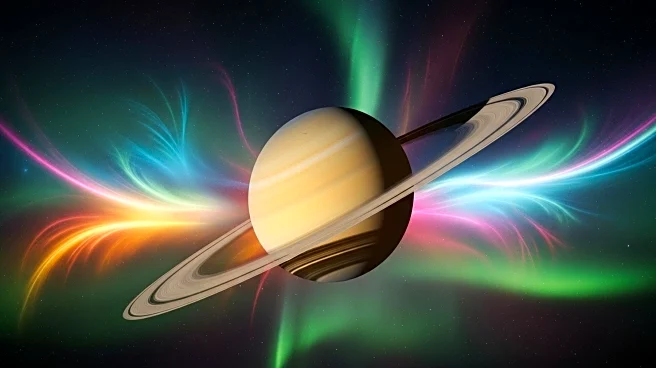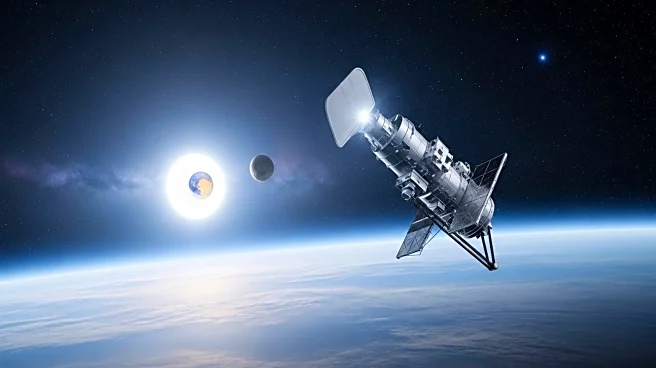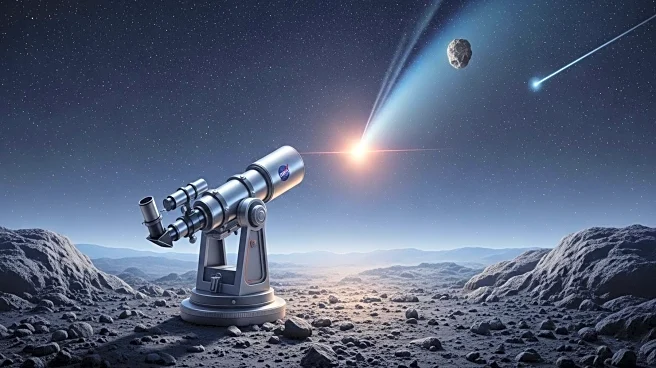What is the story about?
What's Happening?
Recent research led by Evan Bjonnes at Lawrence Livermore National Laboratory has provided new insights into the moon's early history through the analysis of Apollo sample 76535. The study suggests that the impact forming the Serenitatis Basin occurred 4.25 billion years ago, 300 million years earlier than previously thought. This finding challenges existing theories about lunar impacts and their timing, offering a simpler explanation for the sample's origin without the need for additional impacts. The research utilized advanced computer simulations to demonstrate how large impacts can lift deep lunar material to the surface without causing significant shock.
Why It's Important?
The revised timeline for lunar impacts has significant implications for understanding the bombardment history of Earth and other inner planets. By recalibrating the timeline of lunar impacts, scientists can better estimate the frequency and timing of large impacts in the solar system. This has ripple effects on theories about Earth's early environment and the evolution of other planets. The study highlights the enduring value of Apollo samples and the potential for modern technology to extract new insights from historical materials.
What's Next?
The findings encourage future lunar missions to focus on collecting samples from large basins, where similar rocks may provide further insights into the moon's history. Astronauts should be vigilant for rocks that appear out-of-place, as they may hold key information about lunar impacts. Continued research and exploration will aim to fill gaps in the moon's early story, enhancing our understanding of planetary science and the solar system's evolution.
Beyond the Headlines
The study underscores the importance of preserving and analyzing historical samples, as they continue to offer valuable scientific insights decades later. It also highlights the role of computer simulations in advancing planetary science, providing a more nuanced understanding of impact processes. The research contributes to a broader narrative of scientific discovery, emphasizing the interconnectedness of planetary histories and the ongoing quest to understand our cosmic origins.
AI Generated Content
Do you find this article useful?
